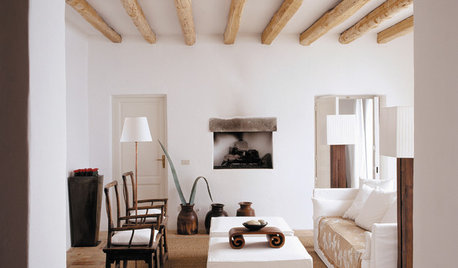Window Sound Reduction Question
S G
7 years ago
Related Stories

TASTEMAKERSThe Seduction of Reduction
Go on a design detox for an emotional and spiritual uplift. 'The Inspired Home' shows you how
Full Story
HOUSEKEEPINGWhat's That Sound? 9 Home Noises and How to Fix Them
Bumps and thumps might be driving you crazy, but they also might mean big trouble. We give you the lowdown and which pro to call for help
Full Story
MOVINGHiring a Home Inspector? Ask These 10 Questions
How to make sure the pro who performs your home inspection is properly qualified and insured, so you can protect your big investment
Full Story
KITCHEN DESIGN9 Questions to Ask When Planning a Kitchen Pantry
Avoid blunders and get the storage space and layout you need by asking these questions before you begin
Full Story
REMODELING GUIDESConsidering a Fixer-Upper? 15 Questions to Ask First
Learn about the hidden costs and treasures of older homes to avoid budget surprises and accidentally tossing valuable features
Full Story
DOORS5 Questions to Ask Before Installing a Barn Door
Find out whether that barn door you love is the right solution for your space
Full Story
FEEL-GOOD HOMEThe Question That Can Make You Love Your Home More
Change your relationship with your house for the better by focusing on the answer to something designers often ask
Full Story
LIGHTING5 Questions to Ask for the Best Room Lighting
Get your overhead, task and accent lighting right for decorative beauty, less eyestrain and a focus exactly where you want
Full Story
GREEN DECORATING8 Questions to Help You See Through Green Hype
With the ecofriendly bandwagon picking up some dubious passengers, here's how to tell truly green products and services from the imposters
Full Story
WORKING WITH PROS12 Questions Your Interior Designer Should Ask You
The best decorators aren’t dictators — and they’re not mind readers either. To understand your tastes, they need this essential info
Full Story








oberon476
S GOriginal Author
Related Professionals
Lees Summit Window Contractors · Dayton Window Contractors · Opa Locka Window Contractors · Seminole Window Contractors · East Renton Highlands Window Contractors · University Window Contractors · Woodland Hills Window Contractors · Ashburn General Contractors · Evans General Contractors · Halfway General Contractors · Meadville General Contractors · New Carrollton General Contractors · Walnut Park General Contractors · North Lauderdale Carpenters · Weston CarpentersWindows on Washington Ltd
oberon476
S GOriginal Author